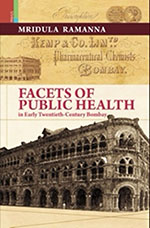Historical literature on public health in colonial Bombay has been vast in depth and scale. We have seen how the city fought the plague, saw questions of sovereignty arise from the medical and moral disaster it inflicted on the city over the years. While the racialized segregated structures of the Presidency have been studied, there is need for a detailed description of the health policies and their intended subjects. Mridula Ramanna undertakes this project in yet another rigorous and meticulous volume on public health governance in Bombay of the late colonial period. We are now past the years of overwhelming disease, and into an age of infrastructural imperialism—many facets of which continue to animate public health governance in the country. In Ramanna’s description, we find that the divisions of official speak and their confined definitions impact ordinary lives. Her present book successfully lays out in detail the nature of how legislation and statist vocabulary on health helped shape public culture about productive populations and labour in a period when calls for independence and self-rule were gaining strength and political colour.
In terms of intellectual trajectory, Mridula Ramanna’s scholarship is an ode to Bombay. Each of her volumes, which she puts together with painstaking research and thick descriptions, seem to flow into the other. The present book is the third of the series on health in colonial Bombay that started with Western Medicine and Public Health in Colonial Bombay, 1845-1895 (London: Orient Longman, 2002). The second in the series was Health Care in Bombay Presidency, 1896-1930 (Delhi: Primus Books, 2012). This book is the sequel and covers themes that were under-discussed in the previous volumes. Each book, published a decade apart, has proved to be foundational for histories of medicine, urbanization, and the city.
Continue reading this review

